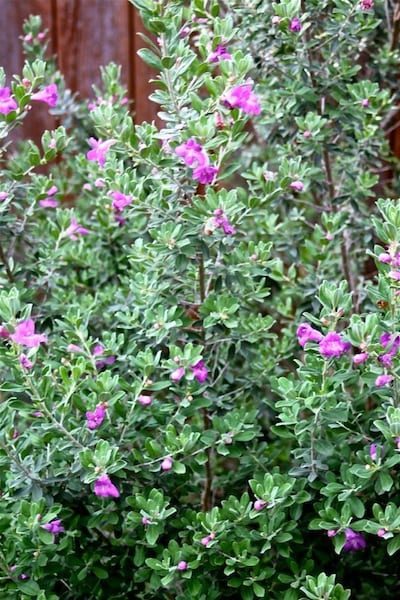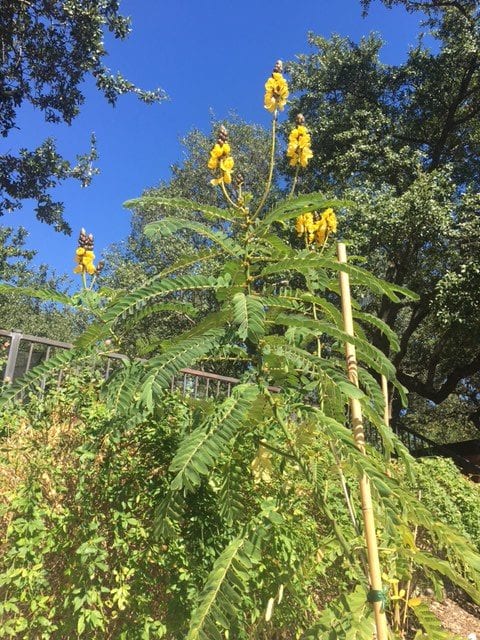Including native plants in your San Antonio landscape can open up a whole new world of gardening. You’ll find that the addition of native plants allows you more time in the long run to actually enjoy your garden, to bring species of native pollinators to your landscape that you may not have known about, and allow you to save some money on your water bill and other gardening expenditures.
Native plants are those plants that occur naturally, have developed, or have existed for many years in a certain area/region. Native plants that stand the test of time get by on natural rainfall and whatever nutrients are available in the soils from which they grow. This means that in addition to the less time and money spent on pesticide and fungicide products mentioned above, you’ll also spend less time and money on irrigation from your hoses and sprinklers and any fertilizer products bought in hopes of enticing a plant to adequately grow.
- Once most native plants have been established, they actually prefer to have less frequent waterings. (Extreme, prolonged periods of drought might be an exception depending on the variety of native plant.) If you could cut your water bill down and not worry that it is at the expense of your plants’ health, wouldn’t you? If you didn’t have to stress and cry and pull your hair out when the city goes into water restrictions, wouldn’t you?
- True native plants do not require fertilizer. As a matter of fact, offering fertilizer may make native plants push out too much foliage without producing flowers or you could risk burning the plant with fertilizer chemicals. Does no more worrying about how much and when to feed your plants sound good to you? We think so too.


Texas Sage can survive on natural rainfall once established, but it sure shows it’s appreciation about a week and a half after rainfall with some gorgeous lilac-fuchsia blooms!
The amount of native insects, wildflife, and even benenficial microorganisms that begins to fill your landscape once you’ve brought in native plant species is astounding. All of these individual organisms come together and work symbiotically in your landscape like they are your personal gardening crew. This crew takes payment in the form of using the native habitats you are providing with native plants.
- The more native plants introduced to your landscape, the less you need to spray for disease and pest issues. The less you spray, the more native benenficial insects are attracted to keep your plants pest and disease free. It’s a wonderful cycle.
- Native butterflies will travel just to sip nectar from the blooms of your native plants. Birds will delight in the berries and shelter of native plants. The word will get out in the nature world that your landscape is THE place to be and you can truly find yourself at peace with nature in your very own backyard.


Popcorn Cassia: Giant yellow blooms in late fall, foliage scented like buttered popcorn or peanut butter (depends on your nose).
We’re sure you’re at least a bit interested in incorporating native plants in your landscape, so check out our list of some San Antonio native plants to get you started. For more info on why to plant native see, “Plant Native! Plants That Survive and Thrive in San Antonio”, and 5 Top San Antonio Favorite Native Nectar Plants for Butterflies
~The Happy Gardener, Lisa Mulroy


Read your little note on Native Plants but you did not mention even one by name.
How about a list of these native plants so we can research and choose!!
Might even get us moving to visit your store!!
Hi Terri,
Thank you for reading! We are working on getting lots of information out to everyone about native plants, and were hoping this blog would explain some of the benefits to planting native plants. Here are the two links that were referenced in the blog and each of these have names of some of our favorite native plant choices. Thanks again for taking the time to read The Happy Gardener. We appreciate the support!
Plants that survive and thrive in San Antonio
Native nectar plants for butterflies
Do you have shade trees available?
Hi Janet,
Yes we do carry multiple varieties of shade trees. Is there a specific type you are most interested in?
Looking for shade tree in my backyard that at least grows 15 feet what do you recommend
Hi Rudy,
We like this list from Neil Sperry for smaller stature trees:https://neilsperry.com/2021/03/best-small-shade-trees/